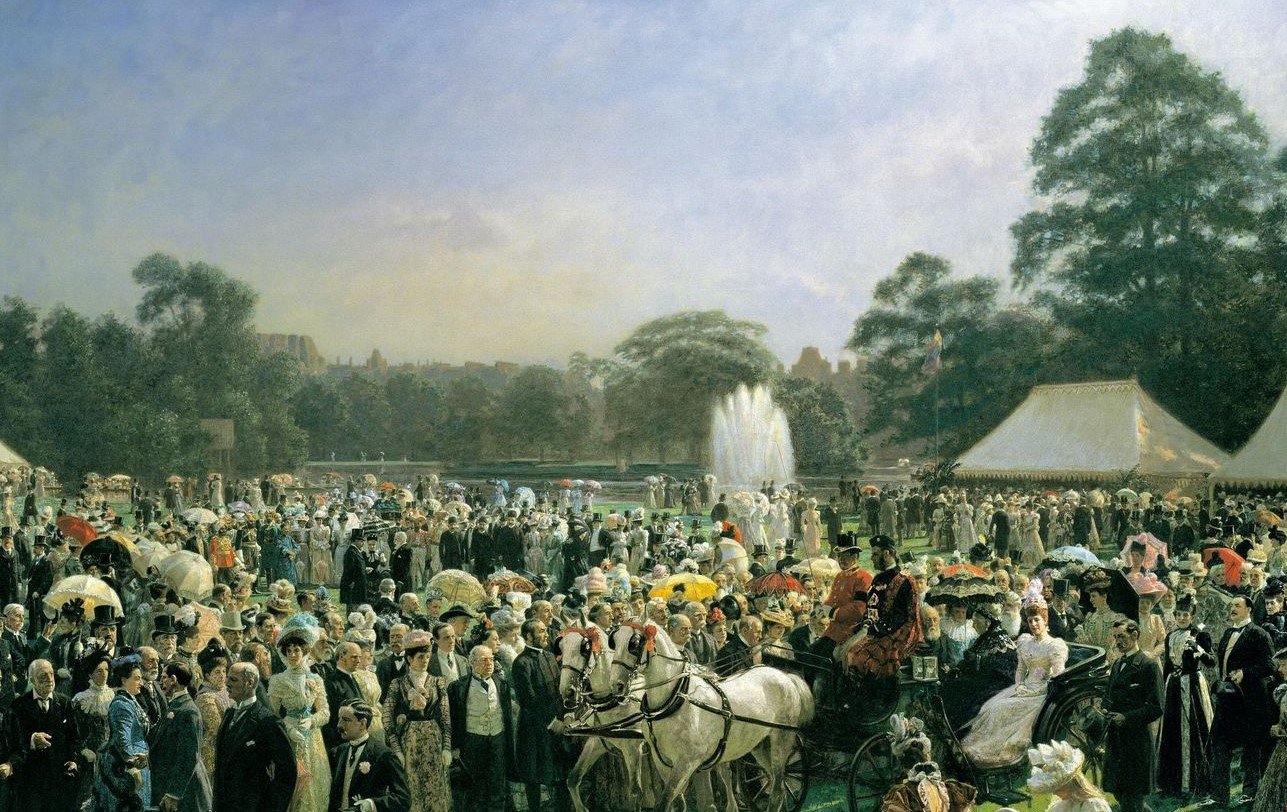
Royal Gardens
Depictions of the gardens at Windsor Castle and other royal residences
The Decorations of the Garden Pavilion in the grounds of Buckingham Palace
1845RCIN 708005
Queen Victoria wanted ‘a place of refuge’ in the garden and in 1842 Prince Albert secured funding of £250 for the project to build a Garden Pavilion. While Edward Blore was the architect of the pavilion, Prince Albert played an active role in its design and decoration. The pavilion’s exterior was rustic, with a ‘wizard’s cap’ roof surmounting an octagonal central room. In contrast, the interior was adorned with intricate frescoes. The choice of this medium was influenced by Prince Albert’s role as the Chairman of the Royal Commission on the Fine Arts which had been established to advise on the decoration of the new Palace of Westminster. Many of the artists who would go on to decorate the Palace of Westminster, worked on the Garden Pavilion, and the project served as a test case for fresco painting in Britain. In February 1843 Charles Eastlake, William Etty, Edwin Landseer, Clarkson Stanfield, Daniel Maclise, Thomas Unwins, C.R. Leslie and Sir William Ross received commissions to decorate parts of the pavilion.
This beautiful velvet-bound volume, shown here, contains 15 chromolithograph prints which depict the lavish decorations inside the pavilion. Published in 1845 following the completion of the pavilion by Prince Albert’s art advisor Ludwig Grüner, with an introduction by Anna Jameson, it showcases the remarkable interiors. It includes the central octagon room which measured 15 feet high and was topped by a dome and decorated with scenes from John Milton’s Comus by each of the eight commissioned painters.
Victoria and Albert greatly enjoyed their new Garden Pavilion and the pathways in the garden were improved in order to make it accessible by pony chaise. It was often the focus of their evening walks together and was also enjoyed by their guests during summer parties. Sadly, the pavilion fell into disrepair and was demolished in 1928.







